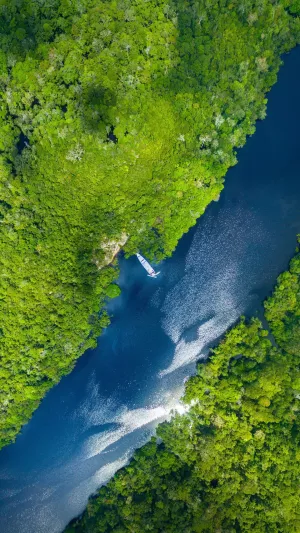There are many rivers and lakes on the earth, covering 71%of the earth's surface. Water is a vital source of our human life, and has played an important role in the survival and history of human beings. Among them, the river is significant to human beings.
There are three longest rivers in this world, namely the Nile, Amazon River, and the Yangtze River. Let's take a look at these three rivers together!
There are three longest rivers in this world
Video: Trend Max
<h3>1. Nile River:</h3>
The Nile is the longest river in the world with a total length of 6,670 kilometers. Flowing through eastern Africa, it eventually merges into the Mediterranean Sea. The Nile is the lifeblood of Egypt, known for its regular flooding that enriches the surrounding farmland with fertile silt deposits.
When the water rises, it will flood the farmland on both sides of the strait; when the water recedes, it leaves behind a thick layer of fertile silt on both sides of the riverbank.
This feature has been utilized by farmers for centuries, particularly in ancient Egypt, where the river played a crucial role in the birth of civilization. Modern Egyptians largely inhabit the Nile's banks, especially in the densely populated Nile Delta region, highlighting its significance as Egypt's lifeline.
If there is no Nile, Egypt will be completely covered by the desert. From the case of Egypt, we can see the importance of rivers, especially the long river. Because the longer the river flows, the wider the range of the land it nourishes, the greater the scale of the nurturing population.
<h3>2. Amazon River:</h3>
The Amazon River is renowned as the world's largest river by discharge volume, basin size, and number of tributaries. Originating in the Andes, its length is subject to varying measurements, but it's commonly cited at around 6,400 kilometers. The Amazon's flow rate of 219,000 cubic meters per second dwarfs that of the Nile, the Yangtze River, and the Mississippi combined. With approximately 15,000 tributaries and a basin area nearly the size of Australia, the Amazon sustains a vast tropical rainforest ecosystem with minimal human habitation.
<h3>3. Yangtze River:</h3>
The Yangtze River ranks as the third-longest river globally, stretching over 6,300 kilometers and serving as Asia's primary waterway. Originating in the Tanggula Mountains of the Qinghai-Tibet Plateau, it traverses eleven provincial regions in China. The Yangtze River Basin, covering 1.8 million square kilometers, is rich in natural resources and supports a significant portion of China's population. Despite its warm climate and abundant rainfall, the Yangtze is prone to devastating floods due to its varied terrain. Today, the river plays crucial roles in irrigation, transportation, and hydropower generation, and sustains the livelihoods of millions.
Rivers like the Nile, the Amazon, and the Yangtze are not merely waterways; they are lifelines, shaping landscapes, ecosystems, and civilizations. Their immense lengths and diverse ecosystems highlight their irreplaceable importance in sustaining life on our planet.





